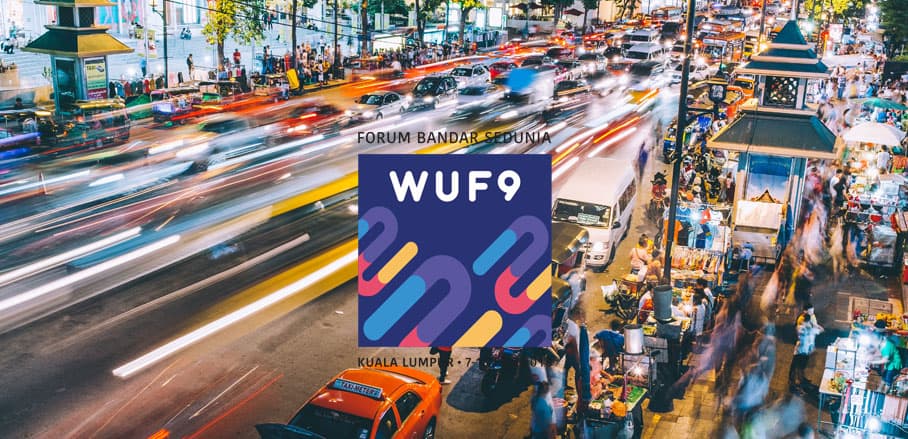World Urban Forum will set stage for a busy 2018
By Gregory Scruggs
Around 20,000 urbanists will gather in Kuala Lumpur, Malaysia next week for the 9th World Urban Forum. But WUF9’s preparations for a quadrennial report will only mark the beginning of a busy year.
For veterans of the global urban development scene, the World Urban Forum marks a watershed moment of sorts. For the first time since UN-Habitat hosted a global conference on cities at its Nairobi campus in 2002, the World Urban Forum has the official imprimatur of a diplomatically-negotiated United Nations agreement.
That’s because the New Urban Agenda, the 20-year roadmap for sustainable urbanisation adopted by 167 countries at the Habitat III summit in October 2016, recognized the World Urban Forum by name. Since every word of the 23-page New Urban Agenda had to be negotiated and agreed upon by diplomats from around the world, a mere mention of any specific institution, concept or event was the result of rigorous back-and-forth.
So if the World Urban Forum made it through the diplomatic wringer, what does that mean for this year’s ninth edition, or WUF9? (For those keeping score, 2014 saw the last conference to hold the name at WUF7 in Medellin, Colombia. Habitat III, although much larger in scope than a WUF, took on the role of a hypothetical eighth edition.)
Chiefly, it means that this year’s WUF will be a formal input to collect material for the first report on the implementation of the New Urban Agenda. The Habitat III agreement calls on the UN system to report every four years on global progress toward the agenda’s ambitious goals for sustainable urbanisation, with the first report scheduled for this year. Given that the New Urban Agenda was only adopted 15 months ago, this first report is something of a baseline and will collate early impressions from cities, countries and regions that have attempted to move the needle in some way, shape or form since October 2016.
That topic will be the daily focus of the AFINUA Room, named after UN-Habitat’s Action Framework for the Implementation of the New Urban Agenda.
WUF9’s collation of material for a quadrennial report will not be taking place in a vacuum, however. [inlinetweet prefix=”” tweeter=”URBANET” suffix=””]The conference comes at the beginning of a busy year for those advocating for better cities in the context of international agreements.[/inlinetweet] The conversations at WUF9 will set the stage for a number of key processes later in the year:
- 5-7 March: CitiesIPCC in Edmonton, Canada – Urbanists have long made the case that cities are essential to the fight against global climate change. Now it seems, the climate community has finally come around to that position. This three-day technical gathering will review the scientific literature on the role of cities in climate change under the mandate of the Intergovernmental Panel on Climate Change. A first-of-its-kind meeting, CitiesIPCC enshrines an argument that mayors have been making for years: As home to the majority of the world’s population and thus to the majority of the world’s carbon emissions, decarbonizing cities is the first step to decarbonizing the planet.A number of sessions at WUF9 will cover climate change ahead of CitiesIPCC, including
a high-level roundtable on Friday, 9 February and a session dedicated to the Edmonton conference on Sunday, 11 February. - February-July: Global Compact on Migration at UN Headquarters – No issue has surged to the top of the international development agenda this decade quite like migration, as the world faces the largest number of refugees and displaced persons since the end of World War II. Soon after WUF9, negotiations will begin in New York on the Global Compact for Migration and convene monthly through to July. Cities are on the frontlines of this global crisis — from the brain drain affecting the cities that migrants leave to the overwhelmed municipal services in receiving cities. As a result, they earned their first-ever seat at the table in these negotiations, something that wasn’t even achieved in the Habitat III process when the topic du jour was cities themselves.Several panels at WUF9 will take up the complicated question of migrants in cities, focusing on issues such as their positive impact (9 February), mainstreaming migration into urban planning (9 February), new research on migrants and cities (9 February), and two sessions on migration targeted at Arab leaders (11 and 12 February).
- 9-18 July: High Level Political Forum at UN Headquarters – This annual review of global progress toward the Sustainable Development Goals will take up Goal 11, the so-called “urban SDG”, for the first time. That discussion is an exciting one for urban advocates who lobbied hard for the inclusion of a standalone goal on sustainable cities during the formation of the UN’s ambitious 2030 Agenda for Sustainable Development.In fact, the genesis of the #urbanSDG campaign goes back as far as WUF7 in Medellin, where many of the key ideas coalesced. Four years later, the key question is how to measure progress in a way that is both meaningful and practical for countries around the world, which may not traditionally track statistics relevant to cities, much less gather data at the disaggregated or city level. These “indicators” remain a bit of an open question and WUF9 may provide an opportunity to fill the gaps ahead of the Goal 11 review in July.
[inlinetweet prefix=”” tweeter=”URBANET” suffix=””]For data lovers, WUF9 offers plenty of deep dives.[/inlinetweet] Sessions will grapple with big data for cities (12 February), the current state of play for SDG indicators (11 February), an index for measuring global commitments made at Habitat III (9 February), citizen-sourced data (8 February), and high-tech tools like earth observatories (8 February).
- San Francisco Climate Summit Not Global Enough for Developing World Leaders - 17. September 2018
- Climate Dance in San Francisco - 11. September 2018
- All WUFed out, but what comes next? - 13. February 2018
